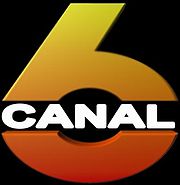
Honduras, officially the Republic of Honduras, is a country in Central America. The republic of Honduras is bordered to the west by Guatemala, to the southwest by El Salvador, to the southeast by Nicaragua, to the south by the Pacific Ocean at the Gulf of Fonseca, and to the north by the Gulf of Honduras, a large inlet of the Caribbean Sea. Its capital and largest city is Tegucigalpa.
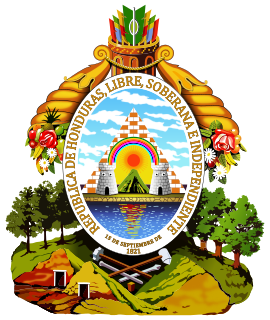
Honduras is divided into 18 departments. Each department is headed by a governor, who is appointed by the President of Honduras. The governor represents the executive branch in the region in addition to acting as intermediary between municipalities and various national authorities; resolves issues arising between municipalities; oversees the penitentiaries and prisons in his department; and regularly works with the various Secretaries of State that form the President's Cabinet. To be eligible for appointment as governor, the individual must a) live for five consecutive years in the department; b) be Honduran; c) be older than 18 years of age and; d) know how to read and write.
The lempira is the currency of Honduras. It is subdivided into 100 centavos.
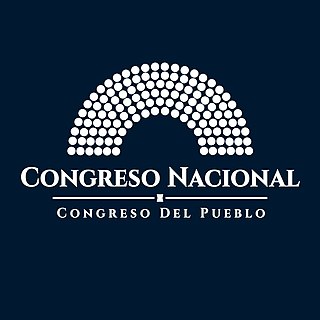
The National Congress is the legislative branch of the government of Honduras.

The Indian River is a 121-mile (195 km) long brackish lagoon in Florida. It is part of the Indian River Lagoon system, which in turn forms part of the Atlantic Intracoastal Waterway. It was originally named Rio de Ais after the Ais Indian tribe, who lived along the east coast of Florida, but was later given its current name.

Catacamas is a city, with a population of 59,990, and a municipality in the Olancho Department of Honduras.
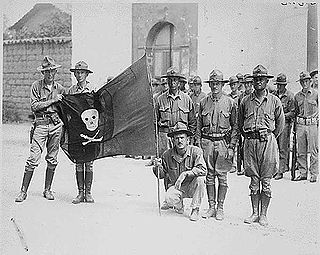
The Banana Wars were a series of conflicts that consisted of military occupation, police action, and intervention by the United States in Central America and the Caribbean between the end of the Spanish–American War in 1898 and the inception of the Good Neighbor Policy in 1934. The military interventions were primarily carried out by the United States Marine Corps, who also developed a manual, the Small Wars Manual (1921) based on their experiences. On occasion, the United States Navy provided gunfire support and troops from the United States Army were also deployed.

Club Deportivo Real Juventud is a Honduran football club based in Santa Bárbara, Santa Bárbara.

The Honduras Air Force is the air force of Honduras. As such it is the air power arm of the Honduras Armed Forces.

Ricardo Gabriel Canales Lanza is a Honduran footballer who currently plays for Vida as a goalkeeper.
The 2000–01 Honduran Segunda División was the 34th season of the Honduran Segunda División. Under the management of Oswaldo Altamirano, Real Maya won the tournament after defeating Comayagua F.C. in the final series and obtained promotion to the 2001–02 Honduran Liga Nacional.
Television in Honduras consists of both local channels and foreign television, normally distributed through cable.

The following is an alphabetical list of topics related to the Republic of Honduras.
Television in Latin America currently includes more than 1,500 television stations and more than 60 million TV sets throughout the 20 countries that constitute Latin America. Due to economic and political problems television networks in some countries of this region have developed less than the North American and European networks, for instance. In other countries like Colombia or Chile, television broadcasting has historically been public-broadcast dominated until the 1990s. The largest commercial television groups are Mexico-based Televisa, Brazil-based Globo and Canada-based Canwest Latin American Group. Due to the shared language of Spanish by two thirds of Latin Americans a lot of programmes and broadcasters operate throughout the region, offering both United States television and Spanish-language television.
Canal 36 is a television station in Honduras. It was briefly closed down by order of the government of Roberto Micheletti on September 28, 2009 during the 2009 Honduran constitutional crisis, along with Radio Globo, because of its support for deposed President of Honduras Manuel Zelaya, but then was re-opened. It is owned by Esdras Amado Lopez.
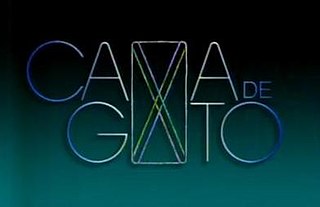
Cama de Gato is a Brazilian telenovela produced and broadcast by Rede Globo in 2009 and 2010.

The 2017 CONCACAF Under-20 Championship was the 5th edition of the CONCACAF Under-20 Championship, the men's under-20 international football tournament organized by CONCACAF. It was hosted in Costa Rica between 17 February and 5 March 2017.

ARA Canal Beagle (B-3) is a cargo ship in service with the Argentine Navy since 1978, capable of transporting bulk cargo, live cattle, and containers. She is the second ship in the Argentine Navy to bear the name of the Beagle Channel in the south of Tierra del Fuego.
The 2020–21 Honduran Liga Nacional season was the 55th Honduran Liga Nacional edition since its establishment in 1965. The tournament started in September 2020 and is scheduled to end in mid 2021. The season was divided into two halves, each crowning one champion. Due to the impact of the COVID-19 pandemic on association football, a new and more compact format is to be used. The first stage was shortened from 18 to 14 weeks. The tournament was divided into two groups of five. The top teams of each group advanced directly to the semifinal round, and the teams finishing 2nd and 3rd from each group had to play a playoff round. At the end of the season, the three teams with the best record qualified to the 2021 CONCACAF League.
